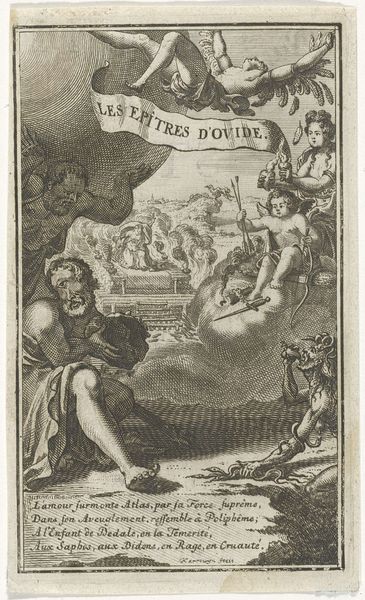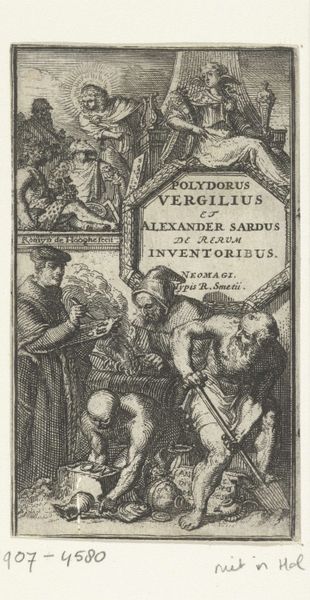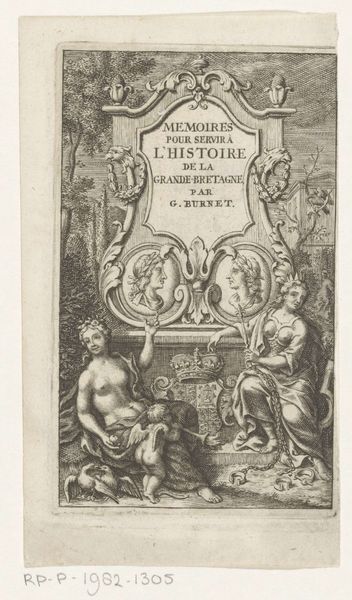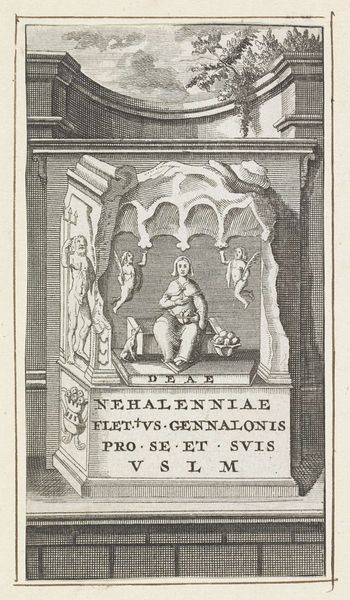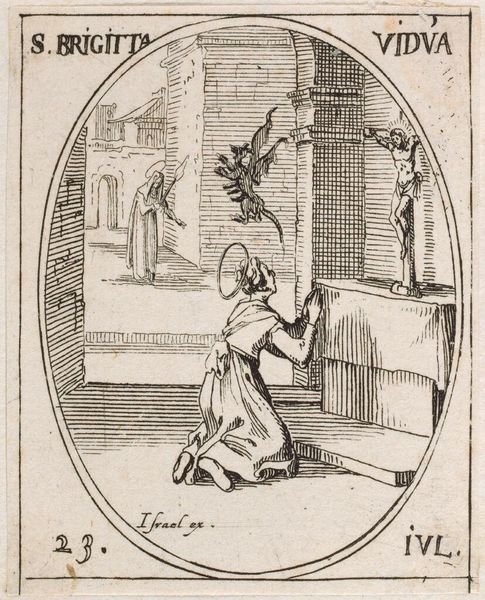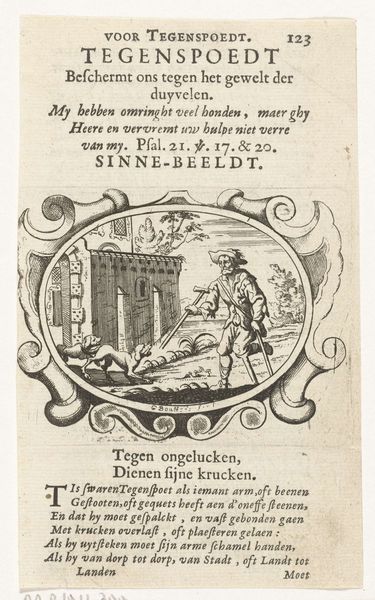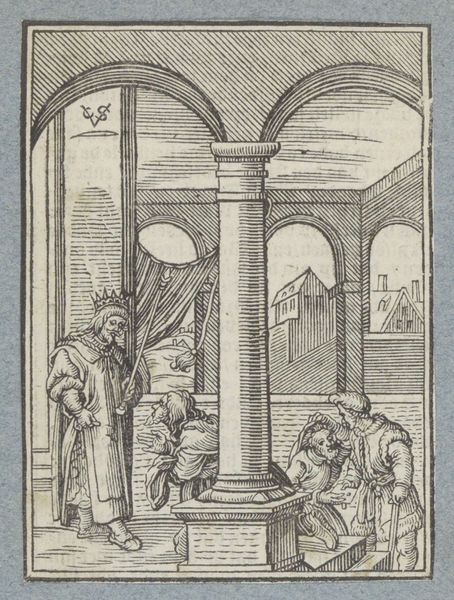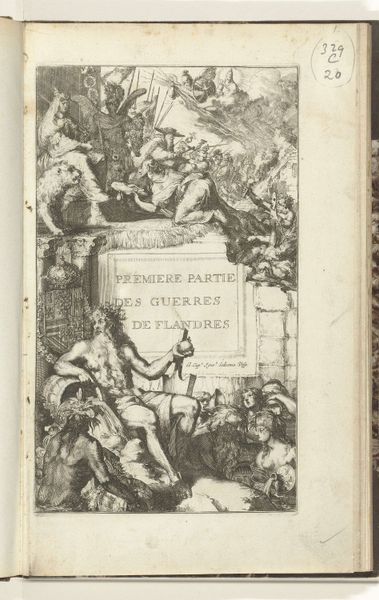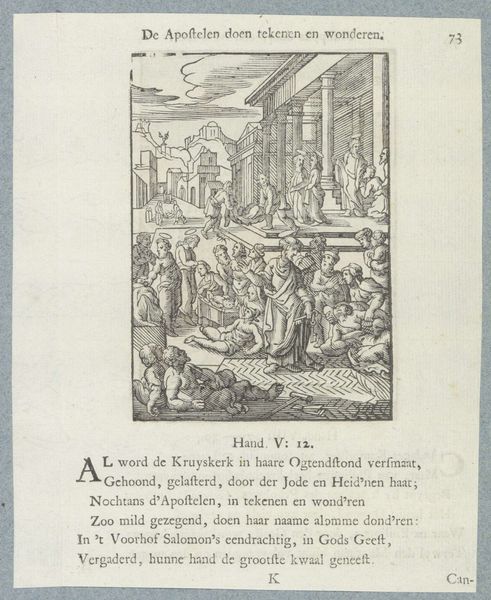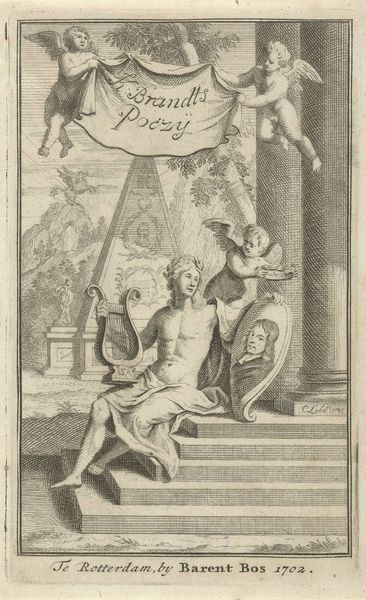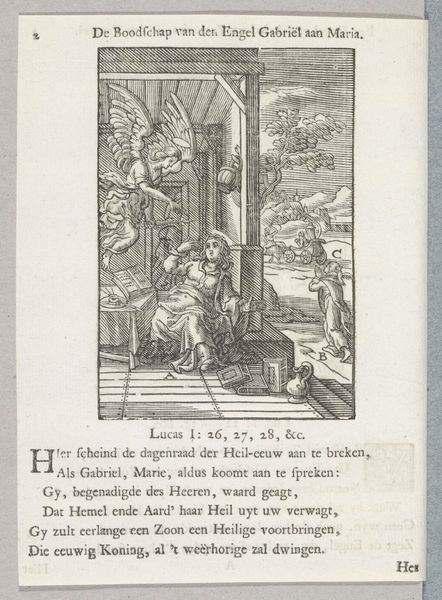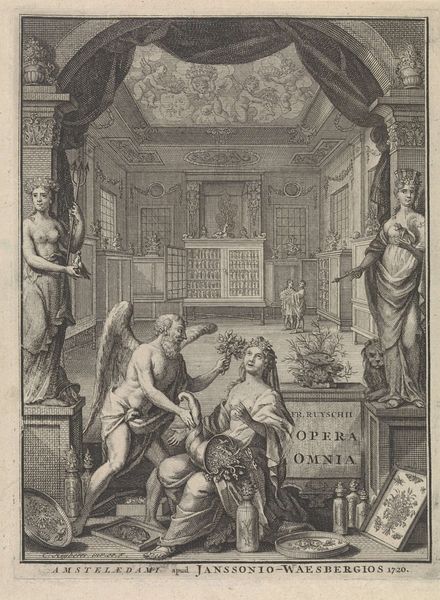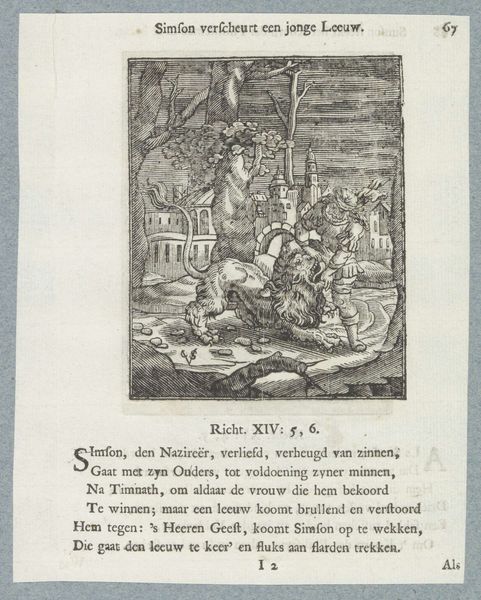
print, etching, engraving
#
aged paper
#
baroque
# print
#
pen sketch
#
etching
#
old engraving style
#
sketch book
#
landscape
#
figuration
#
personal sketchbook
#
sketchwork
#
pen-ink sketch
#
line
#
pen work
#
sketchbook drawing
#
sketchbook art
#
engraving
Dimensions: height 109 mm, width 66 mm
Copyright: Rijks Museum: Open Domain
Editor: Here we have Hendrik Jacobsz Soeteboom’s etching, “Riviergoden bij een tempel”, from 1658. The composition has such incredible detail. I find myself drawn to the contrast between the crisp architectural elements and the wild landscape… What strikes you most about it? Curator: Well, considering Soeteboom's place in the cultural landscape of the Dutch Golden Age, what we're seeing is a fascinating negotiation of civic pride and classical learning. These river gods—the personifications of local waterways—flank what appears to be the title page for a book. How does the inclusion of the title affect your view of it? Editor: I think framing the figures around text transforms the art from simple representation to an advertisement almost! Curator: Precisely. Think about the social function of printed images in 17th-century Netherlands. They circulated widely, influencing public perception and solidifying cultural identity. These weren’t merely decorative; they were integral to the spread of ideas and the construction of collective narratives. Does that shift your perception? Editor: Yes, because suddenly these figures also come to embody a connection with classical virtues that are deeply embedded in the community's sense of self. Curator: Exactly. Soeteboom cleverly uses established visual tropes to lend prestige to his work, intertwining local identity with a broader European intellectual tradition. Editor: So I see how studying it as a document of cultural trends gives insight to 17th-century thought! Thanks! Curator: Absolutely. It highlights the dialogue between the local and the universal. Seeing how these engravings helped create a shared history definitely broadened my view too.
Comments
No comments
Be the first to comment and join the conversation on the ultimate creative platform.
